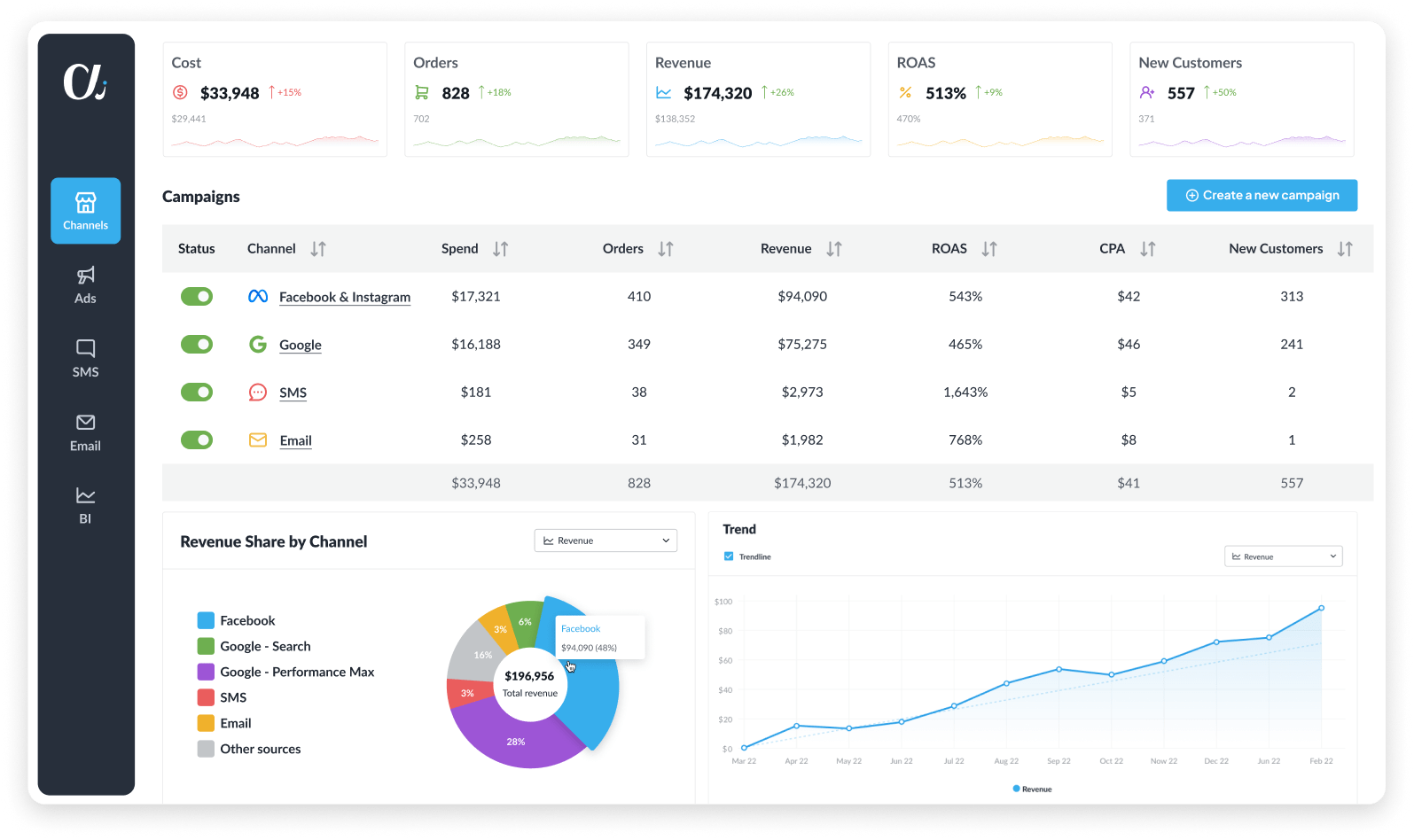Alternatives to Feedonomics by BigCommerce
1. AdScale AI
+Pros
- Proprietary data intelligence provides targeting and optimization capabilities unavailable through Google and Facebook's native advertising tools.
- Implementation accessibility with Shopify merchants consistently reporting setup completion "in minutes without technical expertise".
- Cross-channel optimization capabilities provide 24/7 automated bid and budget management across Google Ads and Facebook campaigns simultaneously.
- Creative automation excellence includes AI-generated video ads at no additional cost and automated product background generation.
-Cons
- Platform integration limitations create dependency on Google and Facebook API integrations, meaning AdScale AI inherits limitations and policy changes from these advertising platforms.
- Conversion volume requirements limit effectiveness for businesses with insufficient transaction data to support AI optimization algorithms.
- Enterprise feature gaps include limited customization capabilities for complex lifetime value modeling, advanced attribution requirements, and deep CRM integrations.
- Attribution challenges particularly with iOS data restrictions can impact AI optimization effectiveness and require ongoing technical adaptation.
One highlighted feature and why it's amazing
Analyzes store data to generate high-impact ad signals inaccessible to Google and Facebook's native optimization tools.

Another highlighted feature of why it’s amazing
Provides 24/7 automated bid and budget management across Google Ads and Facebook campaigns simultaneously.
2. Google Performance Max
+Pros
- Native integration with Google's advertising ecosystem
- Automated bidding strategies deliver 25% higher ROAS
- Creative automation reduces image production costs by 65%
-Cons
- Requires $5,000+ monthly budgets for consistent results
- Operates as a "black-box" system limiting granular troubleshooting
- 45% of adopters under 30 conversions monthly revert to Standard Shopping campaigns
One highlighted feature and why it's amazing
Consolidates Google's entire advertising inventory into unified campaign structures, driving 90% of Shopping ad revenue through machine learning algorithms.

Another highlighted feature of why it’s amazing
Automatically generates product backgrounds and ad variations, reducing image production costs by 65% while maintaining 92% brand compliance.
Other Alternatives
Madgicx
Optmyzr PPC Management Suite
Revealbot (birch)
Smarter Ecommerce (SMEC)
How We Researched This Guide
About This Guide: This comprehensive analysis is based on extensive competitive intelligence and real-world implementation data from leading AI vendors. StayModern updates this guide quarterly to reflect market developments and vendor performance changes.
372+ verified sources per analysis including official documentation, customer reviews, analyst reports, and industry publications.
- • Vendor documentation & whitepapers
- • Customer testimonials & case studies
- • Third-party analyst assessments
- • Industry benchmarking reports
Standardized assessment framework across 8 key dimensions for objective comparison.
- • Technology capabilities & architecture
- • Market position & customer evidence
- • Implementation experience & support
- • Pricing value & competitive position
Research is refreshed every 90 days to capture market changes and new vendor capabilities.
- • New product releases & features
- • Market positioning changes
- • Customer feedback integration
- • Competitive landscape shifts
Every claim is source-linked with direct citations to original materials for verification.
- • Clickable citation links
- • Original source attribution
- • Date stamps for currency
- • Quality score validation
Analysis follows systematic research protocols with consistent evaluation frameworks.
- • Standardized assessment criteria
- • Multi-source verification process
- • Consistent evaluation methodology
- • Quality assurance protocols
Buyer-focused analysis with transparent methodology and factual accuracy commitment.
- • Objective comparative analysis
- • Transparent research methodology
- • Factual accuracy commitment
- • Continuous quality improvement
Quality Commitment: If you find any inaccuracies in our analysis on this page, please contact us at research@staymodern.ai. We're committed to maintaining the highest standards of research integrity and will investigate and correct any issues promptly.